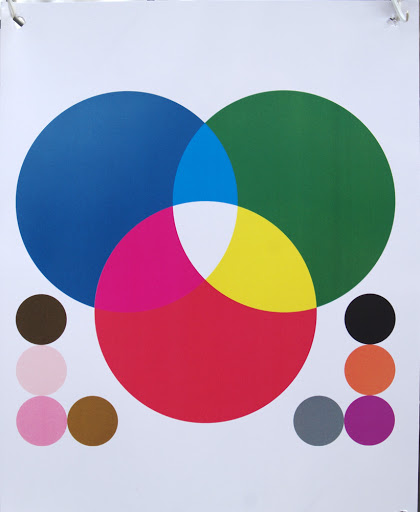
The K-7 images, firstly, are much crisper than the RT's. The K-7 I focused manually using a manual-focus Sigma 35-80mm lens. This lens is VASTLY superior to the kit EF lens on the RT. Also, the K-7 has live view, allowing much more accurate focusing.
For each of these pairs, I'll first post the film copy from yesterday and then the K-7 copy. We'll then examine how they're different. First, no filter.
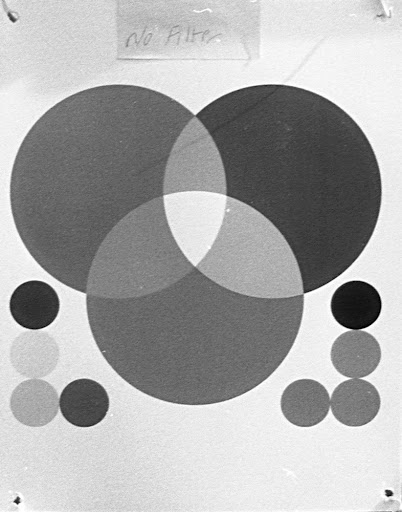

Firstly, you'll notice that in monochrome the K-7 sees red and magenta as the same. Green and blue it also sees the same, or close. Compare that to the Agfa film, which sees red and blue the same and cyan and magenta in similar fashion. This relates directly to how CCDs see light versus how film sees light. CCDs capture light in pixels. The pixels themselves do not see color, only shade. So each pixel has a red, breed, or blue filter over it. The amount of light penetrating the pixel tells the camera how dark or light the subject is. The pixel's color filter determines the color and the camera registers that. So a pixel with a red filter will always see a red dot. The variations between pixels determines the final image.
Another type of digital sensor, used by Sigma in their S1 for instance, has three layers of pixels. Light penetrates silica at different depths for each wavelength, so if light hits a pixel, then the pixel tells the camera what color to make the dot. Light penetrating all three would be white. Light penetrating only one would be, I believe, blue. This is close to how actual color film works and the samples I've seen show that this technology needs fewer megapixels to achieve superior resolution. Sigma, I believe, say that their S1 compares with competitor's camera of twice the megapixel resolution.
So, let's begin comparing how the K-7 sees monochrome differently than the Agfa film with various filters.
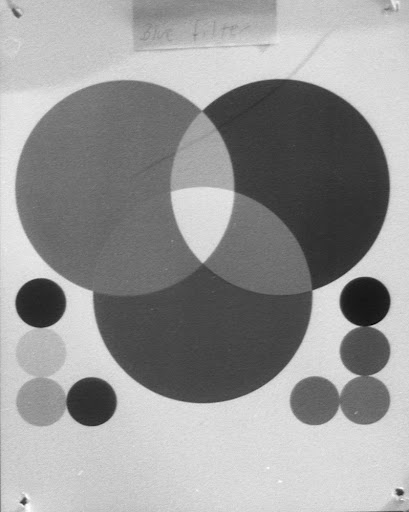

Here the K-7 shows the red and blue being the same basic tone while the magenta is now lighter than red. This is because magenta, having some blue ,was somewhat lightened by the blue filter cutting out red wavelengths. On film, this is somewhat more pronounced.
Green filter.
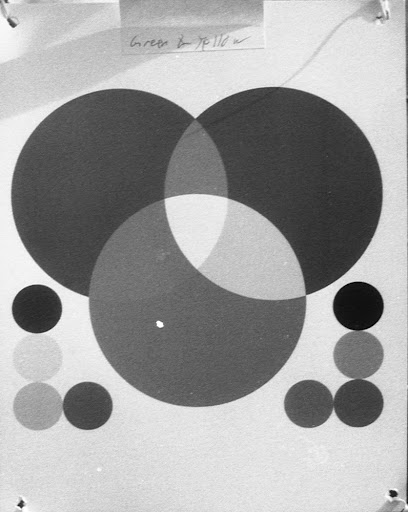

We see here, again, differences in the shades between colors on film versus digital. Digital again sees red and magenta the same and blue and green approximately the same. This tells us that the CCD sees blue and green as similar, perhaps identical, wavelenths in monochrome. This will be more well illustrated later when we use these images to create a color-separation recreation.
Orange Filter
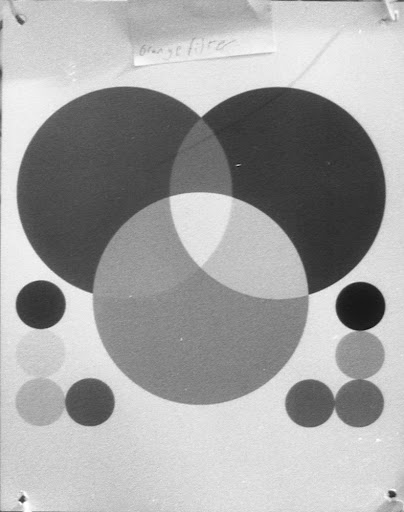

This test shows us that the K-7 again sees red and magenta as the same with orange filtration. This is the same for both film and CCD. The notable differences are between the blue and green darkness, and the yellow's brightness. On the CCD, yellow becomes almost white. This is because the CCD cannot actually see yellow, whereas film can. Note that on the film image, there's a difference between the yellow and white. The CCD sees yellow as a combination of red and green. But the wavelength is close to orange. However, why the CCD lightens yellow mystifies me. I would have predicted the opposite since the filter should reduce, substantially, the amount of green and red light reading the sensor.
I'll skip the purple filter because it's not a contrast-enhancing filter. And it's silly.
Red filter
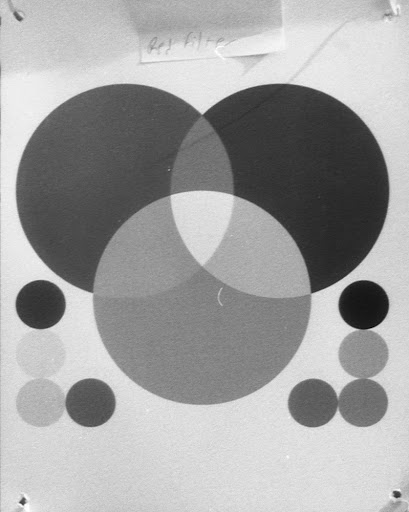

Now here we see some action. The red filter on the K-7 does exactly what its supposed to do -- darken blue and green. The Agfa film records blue and green as darker, but not as much. To understand why the red filter has such a profound effect on the CCD as compared to film, we need to understand a bit more about HOW the CCD works. Digital camera sensors, as noted above, are made of a checkerboard of red, green, and blue pixels. There are more green than red or blue and the sensors are calibrated to green light. Because of this, CCDs are more sensitive to a lack of green light than any other spectrum. As for blue being darkened, blue light is particularly darkened by red filtration and so all the blue pixels register less light, ergo are darker. Because film sees all light in different ways, it is less susceptible to prime-color filtration (in this case red) than is the CCD.
In the interest of time, I'll bypass the tobacco and yellow filters. The tobacco filter worked like a light-red filter, which makes sense because its probably just red and green mixed. The yellow had a minimal effect on the CCD, a more noticeable effect on the film. Again, this makes sense in light of the above explanation of how a CCD works. So let's end with an experiment in color separation printing.
Color photography predates color film substantially. By taking three images, one with each prime color photograph, a crafty photographer can make a color image. This works because when one filters red, the film registers near-white for red. When one filters blue, the film sees blue as near-white. A green filter makes green appear near-white. So, take a negative with a substantial near-white area of red, reverse that negative to make that area near-black, and then change the blacks to red and the negative displays the light present in the red spectrum. Repeat the process for blue and green and one can make an RGB print. In this case, I used the process to make an RGB negative. First, let's see how the original test chart looked again:

Now let's see how the color-separation recreation looks.

Bear in mind that this is based on a series of digital images and results from a process not truly suited for color separation work. Actual color-separation work requires specialty, high-contrast film that records in 'on', 'off', and very few or no shades in between. This recorded various gray shades, resulting in some differences in hues and tones. I had expected green to be the most faithfully recreated in this process, but surprisingly the result shows that the blue filtration was very effective on the CCD. Also, the red filtration worked... kind of.Maybe a darker red filter (this cheesy red filter is pretty light) would have had a different or better result. The yellow and tertiary colors were not as well reproduced as the prime colors, however.
Part of this imperfect result may be because the test chart was printed with a CMYK printer. But honestly, these results are better than I expected for demonstrating a concept.
No comments:
Post a Comment